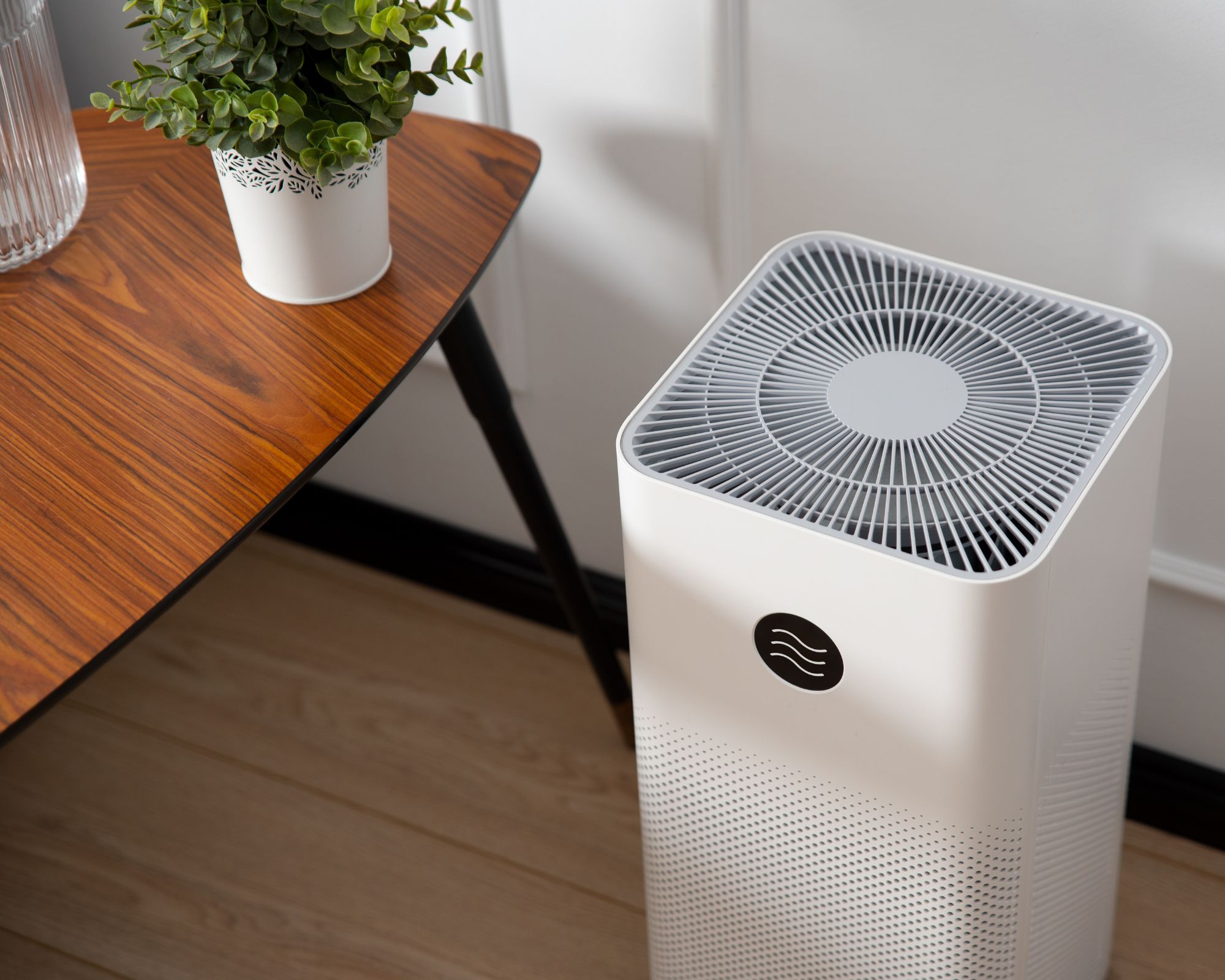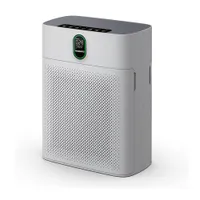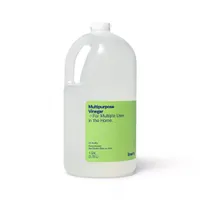How to banish pet odors – for a fresh home with your furry friends
These six odor-banishing tricks are perfect for living harmoniously with your pets


There is no denying that having a pet can help to liven up a home, but they are not the most appreciative of your scented candles and efforts to banish odors.
From general pet smells to fur and dander, it can be hard to make a home smell nice when you share it with four-legged friends.
Luckily, cleaning experts have plenty of experience banishing pet odors from homes so you can live harmoniously with your animals without the house-barrassment when you invite guests around.
How to banish pet odors
When it comes to banishing pet odors, it helps to stop as many bad smells at the door as possible. This can mean using a doormat to help catch dirt and debris from their paws when they come in, hosing or brushing them down when they have been outside, and ensuring that they are bathed frequently to remove anything clinging to their fur.
Beyond that, it is about adopting clever cleaning tips to keep a clean home when you have pets, while staying on top of mess and odor.
1. Deep clean surfaces regularly

Anywhere your pet spends a lot of time is a prime area for regular deep cleaning – as often as once a week or more, depending on the size and type of pet you own, say the cleaning experts at KK Cleaners. When working in these areas, be it their favorite chair, pet bed, or corner of the living room, it is important to use products that are specifically designed for cleaning pet mess. Not only will these be formulated to help tackle odor, but they will not be dangerous for use near animals.
2. Focus efforts on cleaning upholstery

Cleaning upholstery is a must when you have pets, although it is often forgotten about outside of vacuuming up pet hair. Yvonne Keal, Product Manager and Furnishing Expert at Hillarys, recommends cleaning them regularly, starting with vacuuming upholstery and curtains to remove hair and dander and then using a steam cleaner to help kill the bacteria that cause bad smells. Be sure to check fabric labels in case the material cannot be subject to high temperatures. .
Design expertise in your inbox – from inspiring decorating ideas and beautiful celebrity homes to practical gardening advice and shopping round-ups.
Where possible, remove covers and throw them in the washing machine with an odor-busting detergent, such as Downy Rinse and Refresh from Target, to help tackle even the strongest smells.
Finish up with a linen spray that is free from essential oils and pet-safe for lasting freshness.
3. Use an air purifier to help combat dander in the air

One of the biggest causes of pet odors is the dander from their skin that lingers in the air and lands on surfaces around your home. Cleaning this up can be as tricky as trying to completely remove dust in your home, so it helps to use an air purifier with a HEPA filter to catch it before it has the chance to settle and smell, says Sarah Cromwell, cleaning expert and founder of The Cleaning Force.
Adding one of these into your space can also help those with mild allergies, making the air more comfortable to breathe.
Morento Air Purifier | View at Amazon
Our experts used this for weeks and were fascinated by how well it performed, especially for the price. It's subtle enough for even small rooms and has a special night mode too.

Sarah Cromwell is a cleaning expert from The Cleaning Force, a family-owned company that offers full house cleaning services and advice to homeowners in their area.
4. Use odor absorbers in combination with room fragrances

Some pet odors are simply unavoidable, so combining an odor absorber such as Moso air purifying bags from Amazon with fragrance layering can help mask smells that are a given when it comes to owning a pet. You can also use a bowl of vinegar to remove odors from your home, but this is more suitable for quick odor removal and can be impractical for long-term use.
When picking a scent for your space, avoid using anything with a live flame that may pose a fire risk if your pet gets too close, such as candles or flame-lit wax melters. Instead, opt for something like a reed diffuser, candle warmer, or an electric wax melter, and place it well out of reach of animals. For example, Ottilie Blackhall, news writer on Solved, has four dogs at home, and has never received so many 'your home smells amazing' compliments since using this Jo Malone diffuser in the Pomegranate Noir scent, available at Amazon.
Cleaning Vinegar | $4.99 at Target
Having a container of cleaning vinegar in your cleaning cabinet is essential for all sorts of household chores.
5. Conceal litter trays

If you have indoor pets, letter trays are the worst offenders for bad odors. While cats are fastidious cleaners who always ensure their fur looks good, they are not the best at cleaning up after themselves. As a result, it can be useful to contain their trays to mask the odor.
If you have the space in your home, it can be a great idea to give your cats a whole space or small room to themselves (even something such as the space beneath the stairs) to hide their tray and keep smells locked away.
Otherwise, there has been a rise in smart furniture that contains space for a tray with an entry point to help keep your box out of sight and smells more localized. Be sure to keep a litter mat nearby to catch any litter stuck to your pet’s feet or fur so that the odor is not trodden throughout your home.
6. Tackle tough stains and accidents with an enzyme-based cleaner

Sometimes, our pets are a little messier than usual, and our standard stain stations are not quite up to the task. For tough stains and accidents, cleaning expert Sarah Cromwell suggests using an enzyme-based cleaner:
‘Utilize enzymatic cleaners specifically designed to break down and eliminate organic compounds causing pet odors. These cleaners are effective in tackling urine, feces, and other biological stains,’ she explains
When using these types of cleaners, work quickly to tackle the stain before it has the chance to dry, ensure that your pet and any young children are away from the area, and always use gloves and open windows for good ventilation to avoid irritating your skin or airways.
FAQs
What is the best thing to absorb pet odors?
When dealing with recurring or lingering pet odors, the best solution is white vinegar. You can either use bowls of vinegar around your home for quick odor removal, spritz areas your pet uses regularly with pure vinegar and allow it to dry, or use paper towels dampened with vinegar to deodorize tight spots such as their favorite hiding hole or the area around a litter tray without the risk of a spill.
What scent neutralizes pet odor?
One of the best scents for neutralizing pet odor is lavender. This fragrant scent is perfect for overpowering pet smells without being overwhelming in your space. What’s more, its naturally relaxing properties make it perfect for spritzing throughout your home for a restful retreat you and your pets will enjoy.
When you clean your home with your pets in mind, it is important to remember that consistency is key. Pet odors are unlikely to go away forever so long as your animal lives in your home, so stick to a consistent schedule and stay on top of spills and stains to avoid overpowering odors that make your home uncomfortable to relax in.

Chiana has been at Homes & Gardens for two years and is our resident 'queen' of non-toxic living. She spends most of her time producing content for the Solved section of the website, helping readers get the most out of their homes through clever decluttering, cleaning, and tidying tips. She was named one of Fixr's top home improvement journalists in 2024.

